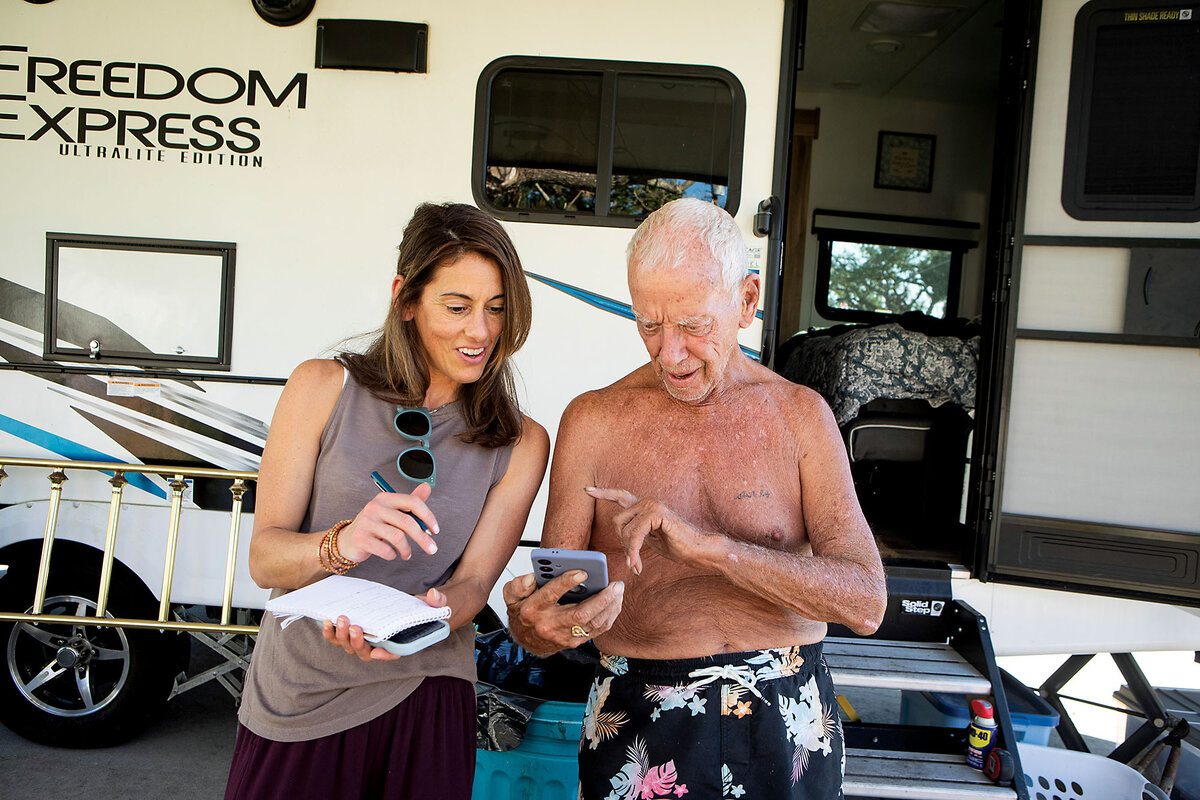What matters most in disaster reporting
Loading...
Reporting about natural disasters can be tricky. At its worst, this sort of journalism can feel voyeuristic, or even exploitative. (We all have that cringeworthy image of the tricked-out correspondent interviewing people about their trauma before filing a quick report and jetting home.)
At its best, though, our work during and after these moments can reveal some big truths about what it is to be human.
This week, our West Coast Bureau Chief Francine Kiefer writes not just about evacuating her home as the Los Angeles fires loomed orange over nearby hills, but also about the care locals showed one another as the blazes grew larger. This meant everything from recommending fire-tracking apps and finding lodging for those fleeing their homes to giving hugs and handmade notes to firefighters.
These stories of generosity and kindness, Francine expects, will continue alongside the devastation. It is a ŌĆ£yes, andŌĆØ perspective that the Monitor values deeply, a nuance in storytelling that pushes us to keep attention on people and places and policies even after the first flurry of disaster reporting is over.
This is also why I visited and wrote about Englewood, Florida, for this weekŌĆÖs Science and Nature story.
The dominant media storyline is that Florida escaped the worst damage when hurricanes in the fall of 2024 failed to make a direct hit on heavily populated Tampa Bay. But in Englewood, I saw a different reality. The people there, some of whom are still recovering from the devastation caused by Hurricane Ian in 2022, are dealing with extensive property damage from Hurricane Milton. They are also trying ŌĆō despite a slew of economic and policy forces working against them ŌĆō to come together in the dire aftermath of the storm.
It might seem glib to use words like ŌĆ£hopeŌĆØ and ŌĆ£resilienceŌĆØ when there is footage of terrifying wildfires or wind-shattered homes. Our job in covering disasters, though, is to make those qualities as real to readers as the heartbreak. Because they are. The hopefulness and resilience of a Gene Jeffers or a Pam Brobst ŌĆō just two of the people I interviewed ŌĆō take my breath away. And in a changing environment, those are the qualities that society will need most.
This column first appeared in the Jan. 27 issue of ║ŻĮŪ┤¾╔± Weekly.╠²Subscribe today to receive future issues of the Monitor Weekly magazine delivered to your home.





